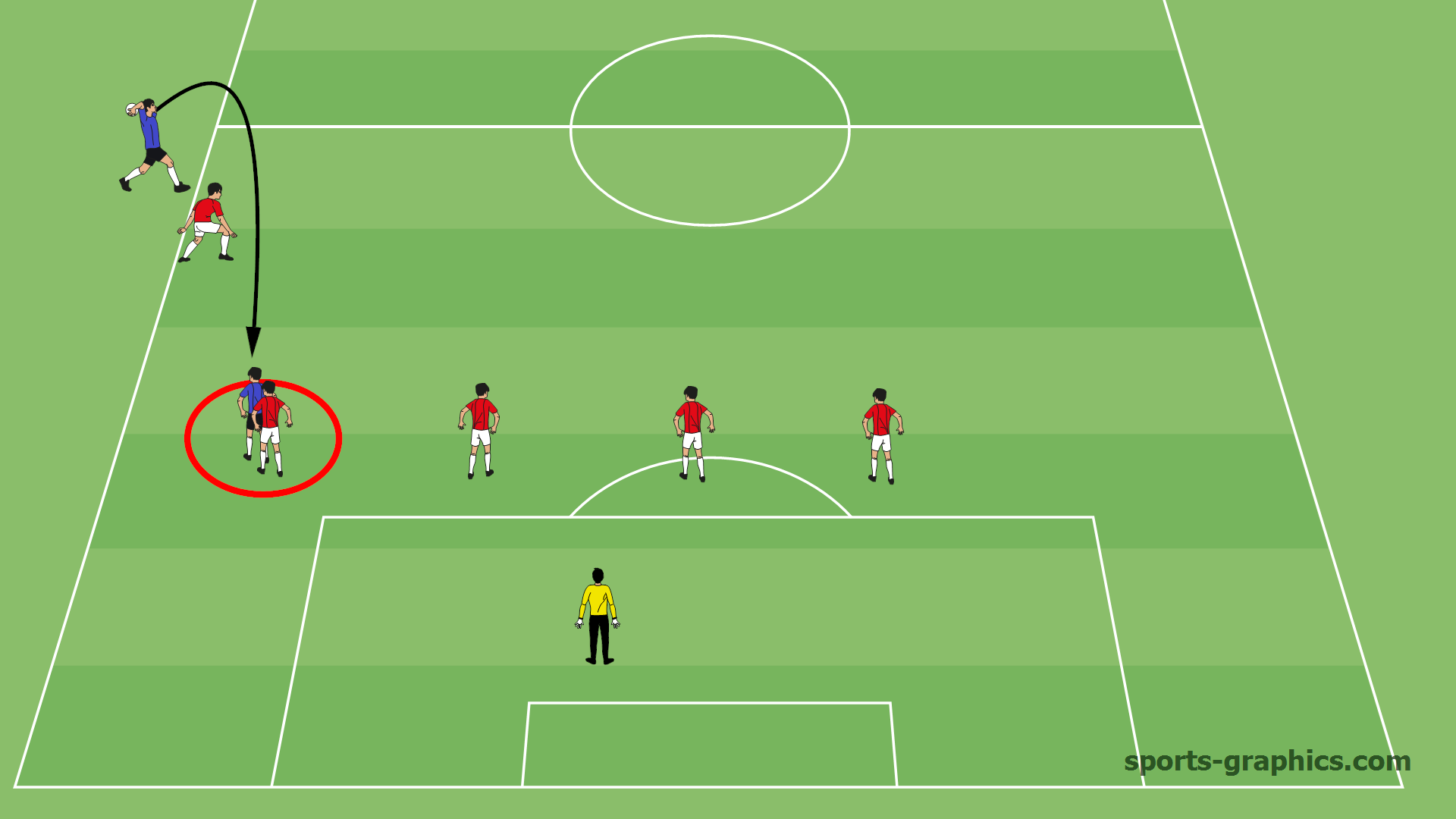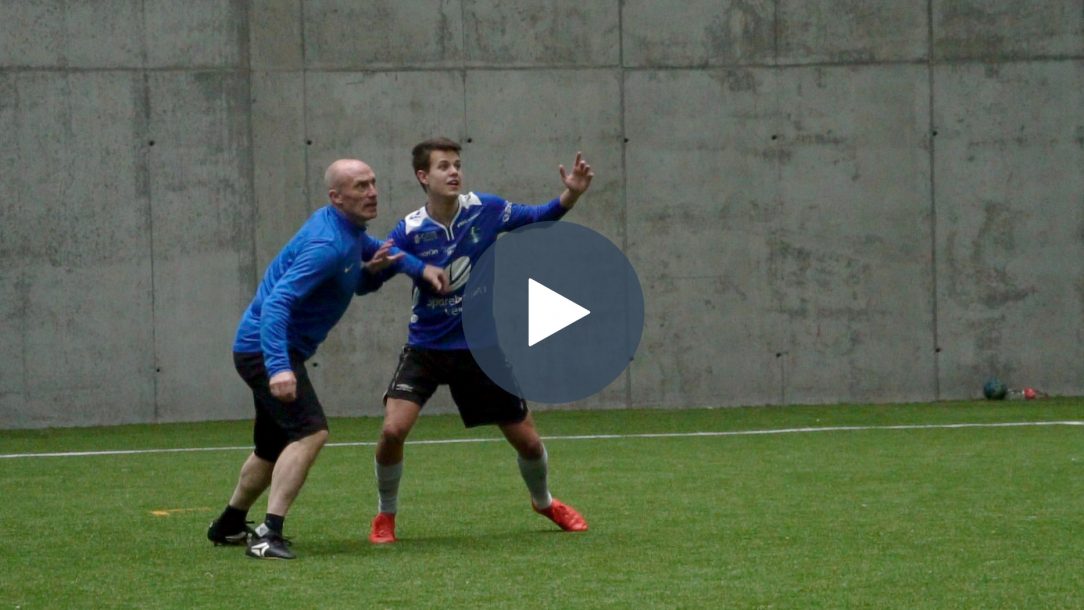Situation
The opposing team has a throw-in on the attacker’s right side 40 meters from the goal. You are marking the attacking player.

Figure: Giske Defending. Credit: www.sports-graphics.com
You are marking the attacking player – He moves backwards and holds his arms out so you cannot move forward.
Challenges
The winger is standing still, and you are marking by standing behind him or next to him. Your opponent moves backwards and holds his arms out so you cannot move forward. Eventually, he moves his back into your body and uses his arms to covertly impede your movement and balance. He now has good control over you and the situation, and he can receive the ball without much difficulty. The causes of the challenges are largely the same as in the last situation, just in a slightly different setting.
The problems you have are as follows:
- You are positioned behind the attacking player.
- You are struggling to move effectively in the longitudinal direction.
- You have limited freedom of movement and have allowed the forward to take control of the situation.

He now has good control over you and the situation. He can receive the ball without much difficulty.
Common Mistakes
Here are some common mistakes that defence players make in this situation:
- Again, your working conditions are bad. Most players subconsciously move themselves into the frontal defending position in situations like this. This is not a good approach for this situation. As discussed earlier, the frontal defending position is great if you want to work sideways but not great if you need to move in the longitudinal direction.
- You have to protect yourself and obtain the space and freedom you need to move.
- You miss an opportunity to actively influence the game through implementing your own game plan.
Most players subconsciously move themselves into the frontal defending position in situations like this.
Solutions and Tips
Again, your goal in this scenario is to break the pass in front, or to at least disrupt the attacking player as he or she is in the process of receiving the ball. This task can be resolved as follows:
Tip 1. Work on the inside (goal side) of the attacking player
In this situation, it is advantageous to work inside of the attacking player since the room on the sidelines is limited. In addition, you may also be outplayed if you are working on the ball side because there is a significant chance that the ball can be thrown inside or over your head.
Your goal in this scenario is to break the pass in front, or to at least disrupt the attacking player.
Tip 2. Select the chase defending position and avoid body contact
Prevent the attacking player from securing body contact with you by choosing the chase defending position. When he or she tries to come into body contact, move away. If the attacker tries to hold you, use your arms to defensively push their arms away.
Tip 3. Remain in motion
Select the chase defending position and remain in motion (as required). Adjust your position if necessary. You now have to evaluate your position. If, for example, you are positioned too far ahead of the attacker, he or she may receive the ball towards the other side and put you out of action. If you position yourself too far behind the attacker, it will be easier for the attacking player to receive the ball. Be sure to adopt a wide leg position and to retain good LFT (Leg, Feet, Toro) quality. This will allow you to maintain a strong balance, get a good start, and achieve great force development.
Work on the inside – Select the chase position – Remain in motion.
The Result
If you work in this way, you will often find that the attacking player struggles to control the situation (you and the ball). There is also a high chance that you will win most duels because the attacking player will have too many factors to try and control. The attackers will find it difficult to control you while also getting into position for an incoming ball when you are moving in this manner.
There is a high chance that you will win most duels because the attacking player will have too many factors to try and control!

